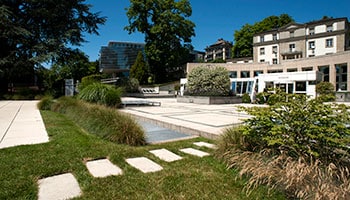Guidewire (A): Sprinting to success
When John Seybold and his partners founded Guidewire (originally Centrica Software) in 2001, he knew little more about the insurance industry than an informed consumer. But as chief architect of the startup company, he also knew he and the team had to learn quickly if they were going to convince mainstream insurers to scrap their expensive aging mainframes and adopt Java-based solutions from an unknown and unproven provider. Seybold felt the flexibility and speed they needed might be realized through current thinking on agile project management and a process called “Scrum.” An outcome of the Agile Manifesto, Scrum defined a new way of organization: One that focused on creating products with the customer; that cut out middle management; where projects ran on a monthly cycle; and that enabled the team to rethink priorities and processes at the conclusion of each monthly cycle. Seybold and his partners imagined that this process would help them quickly create an opportunity in insurance software. However, the direction brought risk. Scrum had been used on a project basis, but as far as Seybold and his partners knew, never before to organize a whole company. Would it scale as the organization grew? Might clients reject a startup company with both radical new products and a radical new organization? And would building a new company, a new product and a new organizational form be more than Seybold and his partners could manage? In the hostile post-internet bubble environment where funding was limited and interest in new software from startup companies was even more limited – they would have to be right fast.
- Expose participants to a different way of organizing
- Break them out of a traditional model of hierarchies, long term plans and projects that drag on even after their market need has faded
- Using Scrum, Guidewire has discovered a way to build flexibility into the organization, so that new information can be acted on immediately, as part of the firm’s normal mode of operation
- The dilemma at the end of the A case is if and how long this model will continue to function as the organization grows
Guidewire Software, Finance and Insurance, Consumer Goods, Computers
2001 - 2017
Cranfield University
Wharley End Beds MK43 0JR, UK
Tel +44 (0)1234 750903
Email [email protected]
Harvard Business School Publishing
60 Harvard Way, Boston MA 02163, USA
Tel (800) 545-7685 Tel (617)-783-7600
Fax (617) 783-7666
Email [email protected]
NUCB Business School
1-3-1 Nishiki Naka
Nagoya Aichi, Japan 460-0003
Tel +81 52 20 38 111
Email [email protected]
IMD retains all proprietary interests in its case studies and notes. Without prior written permission, IMD cases and notes may not be reproduced, used, translated, included in books or other publications, distributed in any form or by any means, stored in a database or in other retrieval systems. For additional copyright information related to case studies, please contact Case Services.
Research Information & Knowledge Hub for additional information on IMD publications
- Guidewire (A): Sprinting to success
- Guidewire (B): The corporate sprint
- Guidewire (A): Sprinting to success
- Guidewire (B): The corporate sprint
Case reference: IMD-3-1833 ©2007
Research Information & Knowledge Hub for additional information on IMD publications
Case reference: IMD-3-1834 ©2007
Research Information & Knowledge Hub for additional information on IMD publications
in I by IMD
Research Information & Knowledge Hub for additional information on IMD publications
Research Information & Knowledge Hub for additional information on IMD publications
Research Information & Knowledge Hub for additional information on IMD publications
Research Information & Knowledge Hub for additional information on IMD publications
in I by IMD
Research Information & Knowledge Hub for additional information on IMD publications
Research Information & Knowledge Hub for additional information on IMD publications
Research Information & Knowledge Hub for additional information on IMD publications
Research Information & Knowledge Hub for additional information on IMD publications
Research Information & Knowledge Hub for additional information on IMD publications
Research Information & Knowledge Hub for additional information on IMD publications








